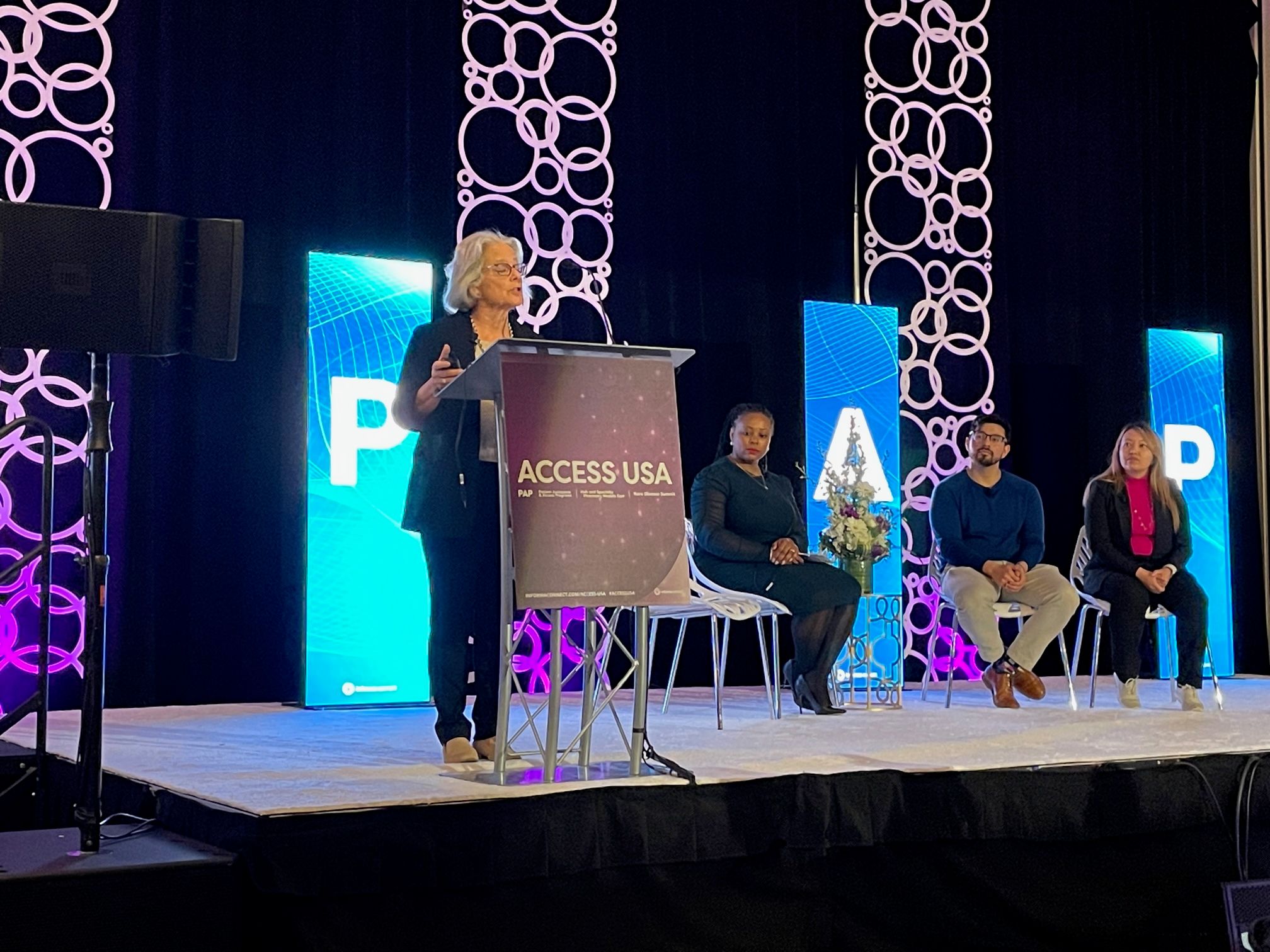PAP 2024: Examining Patient Access and Affordability
Panel discusses PAN Foundation’s inaugural “State of Patient Access” report, and dives deep into patient challenges.

Patient Assistance & Access Programs (PAP) featured a session regarding “The State of Patient Access and Affordability,”1 moderated by Amy Niles, chief mission officer at the PAN Foundation, a nonprofit that helps underinsured people afford their out-of-pocket (OOP) prescription medications.
Joining her as panelists were Adrianna Nava, PhD, president of the National Association of Hispanic Nurses (NAHN), a nonprofit that provides equal access to educational, professional, and economic opportunities for Hispanic nurses; Monique French, senior director, patient advocacy, health policy & communications at Rx4good, a patient advocacy and patient engagement consultancy; and Michael Galarraga, Pennsylvania state representative, OutCare Health, a nonprofit that strives for LGBTQIA+ health equity.
Fresh off the presses after officially being released this morning at 10 a.m. ET, Niles led the session off by sharing the results of PAN Foundation’s inaugural “State of Patient Access” report,2 a survey intended to explore the various obstacles patients are facing when it comes to healthcare access, including how those challenges affect various communities. PAN also hopes to be able to form an “action-oriented” agenda to bring about change.
The report was organized by a scorecard that contained five categories presenting the follow scores:
- Overall access to care = C+ (78.8%)
- Relationship with healthcare professionals (HCPs) = B (84.2%)
- Affordability of prescription medications = B- (82.3%)
- Access to treatment through healthcare plans = D- (62.8%)
- Financial toxicity = C- (70.7%)
As a result, the overall grade for the state of healthcare access among patients with a chronic health condition was a C at 75.8%.
When explored further, there were certainly some areas that were particularly noteworthy. Let us start with relationship with HCPs: LGBTQIA+ patients only rated it a C; the same could be said of how Hispanic patients rated the affordability of prescription drugs, which is influenced by the high OOP costs. Due to high OOPs, 34% of respondents overall noted that their physical and mental health suffered, while 55% consequently chose not to fill their prescription.
Examining access to treatment via healthcare plans, there were D-minuses and Fs across the board, spanning all races/ethnicities, genders/gender identities, generations, and incomes, which was mainly due insurance-related challenges, including the need for prior authorization, whose prevalence has increased over the past five years.3
Financial toxicity, defined by the study as “the emotional, mental, and physically debilitating—and often life-threatening—financial side effects and burdens associated with treatment for your chronic condition(s),” presented Ds and Fs in various categories, including for patients of color, Hispanics, and millennials (ages 27-42), who were rated, a D-, D, and F respectively.
Overall, patients with chronic conditions are not giving access to medical care high grades, and are struggling to afford necessary care. People of color and those a part of the LGBTQIA+ are also facing challenges in receiving healthcare access.
To the panel, Niles raised a multitude of questions, with a sample of responses including:
In regard to the findings, what stood out to them, and how are the highlighted disparities consistent with their experiences, both as a healthcare professional or patient?
French noted that, “What stood out to me was that 38% of individuals reported having to take in a year to three years by accurate diagnosis. That hit home to me because it took me two years of wrong diagnosis in order to be diagnosed with lung cancer. I was diagnosed with asthma, bronchitis, and pneumonia, and it creates a lot of frustration within that patient population when you're not able to get an accurate diagnosis.”
Are conversations social drivers of health happening?
“I don't think that they are happening as frequently as it should be happening. I remember when we were discussing just the overall report and findings, I had brought up the personal experience of somebody that I know, who had a neurological disorder that they're living with,” Galarraga explained. “They went into the room and thankfully, were approached by their physician and talked about the financial constraints of taking this medication that was going to cost about $2,000 a month. For this person, they ended up, being on FMLA [Famil and Medical Leave Act].
“ … That’s just one case, but think about the millions of patients that are going into doctors’ offices, just today. Like how many of those doctors, how many of those case managers in that setting are having these conversations and providing effective resources when those individuals leave that office?
If you had that magic wand and you could change one thing in the healthcare system to improve access to care, what would that be?
“I'll stick to my opt in, said Nava, “but I would love also for us to reinvest in the primary care public health system, because I think that would improve access to a lot of individuals right off the bat.”
In conclusion, without being able to afford medication that they are in dire need of and amidst the battle in lowering OOP costs, Niles put a bow on the presentation with the thought that indeed, the United States needs to think about the total cost of care that they face and not look at events in such a siloed fashion.
References
1. Niles A, Nava A, French M, Galarraga M. The State of Patient Access and Affordability. March 19, 2024. PAP 2024. Philadelphia.
2. State of Patient Access. PAN Foundation. March 19, 2024. Accessed March 19, 2024. https://www.panfoundation.org/state-of-patient-access/
3. Saraceno N. Access USA 2024: The State of the Industry. Pharmaceutical Commerce. March 19, 2024. Accessed March 19, 2024. https://www.pharmaceuticalcommerce.com/view/access-usa-2024-the-state-of-the-industry